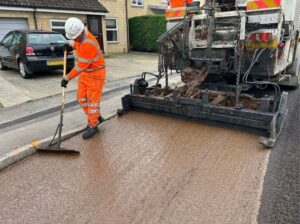Wiltshire Council has shared details of highways investment over the past five years in each of its 18 area boards.
Wiltshire Council has shared details of highways investment over the past five years in each of its 18 area boards.
The report, discussed at this week’s Environmental Select Committee (Tuesday 12 November), explains that the council manages more than 2,800 miles of roads throughout the county, with 356 miles of A-class roads, which carry the most traffic and have higher numbers of accidents. There are also 201 miles of B-roads, 1,042 miles of C-roads and 1,251 miles of unclassified roads in the county.
The council’s Asset Management Policy and Strategy sets out its approach to maintaining its highways infrastructure. This involves taking into account the lifecycle of the assets, while also monitoring the performance of its intervention and investment strategies, to minimise expenditure while ensuring the required performance.
South West Wiltshire Area Board has the most miles of roads in Wiltshire, with around 330 miles of mostly C and unclassified roads, followed by Chippenham and Villages Area Board, with around 240 miles. Westbury Area Board has the fewest miles of road.
This road distance is reflected in the money spent on major maintenance for each area board, which includes resurfacing, patching, surface dressing and micro asphalt treatments. South West Wiltshire has had just under £7m of work in the past five years, with the next highest expenditure in Royal Wootton Bassett and Cricklade Area Board, which has seen £5.2m invested during the same period.
Two other expenditure figures that are featured in the report – potholes patched and repairs by pothole gangs – show a variance of investment across the 18 area boards that is based on several factors. Over the past five years, Royal Wootton Bassett and Cricklade has had the most investment in pothole repairs, followed by South West Wiltshire.
Cllr Nick Holder, Cabinet Member for Highways, said: “Showing our highways investment by area board is a really useful exercise, as it illustrates where we spend our money and why – and of course this is based on many factors, such as the length of roads, type of roads, road usage and local geography and the results and analysis of our regular carriageway condition surveys.
“The council has invested an extra £22m into Wiltshire highways – on top of the £20.7m we receive from the Government – and it is really making a difference on the county’s roads, with more resurfacing, more repairs and fewer potholes.
“
For example, the council is now using Bobcat machines that can remove and replace large areas of road in a matter of minutes, before moving straight on to the next job. It has also spent £1.1m on this brilliant piece of kit since April across our 18 area boards – and this could not have been staffed and deployed without our extra investment.
And there is much more to come,csays the council, as it continues to invest significant sums into filling and preventing potholes, replacing and extending the life of road surfaces, preventing flooding, replacing road signs and reinstating and painting new road markings. This extra investment is making a real difference in every one of the council’s18 area boards around the county.
To read the full report, : Agenda – Democratic Services – Wiltshire Council






















